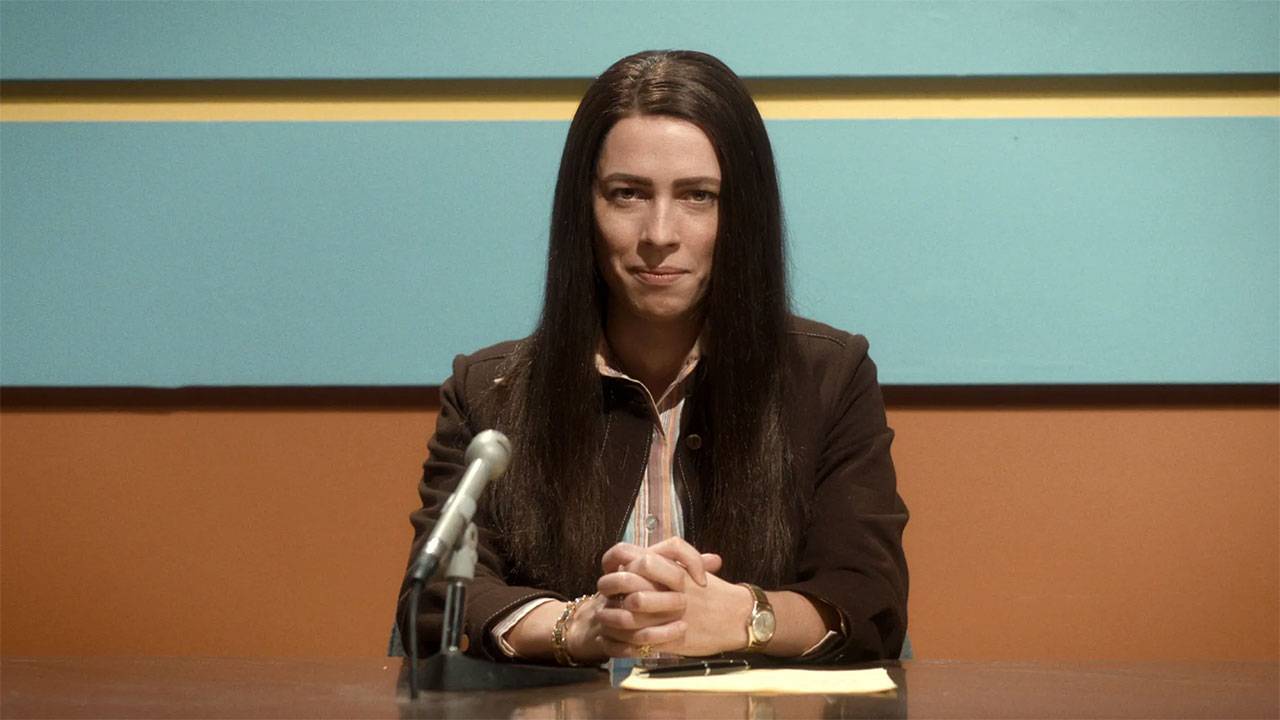Christine Chubbuck: Unraveling The Tragedy & Legacy Of The News Reporter
Can a single moment on live television forever alter the course of history and perception? On July 15, 1974, the world witnessed a tragedy that would forever be etched in the annals of broadcast history: the suicide of Christine Chubbuck, a news reporter, on live television. Her actions, shocking in their immediacy and finality, sparked a conversation that continues to reverberate through the corridors of media, mental health awareness, and societal expectations.
In the wake of her untimely death, the story of Christine Chubbuck has been largely forgotten by the general public. However, two new films, one a documentary and the other a narrative, have emerged, attempting to unravel the complex tapestry of events that led to that fateful morning. These cinematic explorations serve as a somber reminder of the human cost of professional pressures, mental health challenges, and the relentless pursuit of success.
| Category | Details |
|---|---|
| Full Name | Christine Powell Chubbuck |
| Date of Birth | August 24, 1944 |
| Place of Birth | Hudson, Ohio, USA |
| Date of Death | July 15, 1974 |
| Cause of Death | Suicide by gunshot |
| Occupation | Television news reporter |
| Education | Laurel School for Girls, Ohio University |
| Notable Events | First person to die by suicide on live television |
| Family | Parents: Margaretha "Peg" and George Fairbanks Chubbuck; Siblings: Timothy and Greg |
| Mental Health | Struggled with depression |
| Professional Frustrations | Career advancement, professional anxieties |
| Legacy | Subject of documentaries and narrative films; Sparks discussions about mental health, media ethics, and societal pressures |
| Reference | Wikipedia - Christine Chubbuck |
Born in Hudson, Ohio, on August 24, 1944, Christine Chubbuck's life, like a meticulously constructed news report, was filled with chapters of family closeness and professional aspirations. She was the daughter of Margaretha "Peg" and George Fairbanks Chubbuck, and she maintained a strong bond with her parents and her siblings, Timothy and Greg. Her early life, marked by the familiar rhythms of childhood, gave way to the complex challenges and expectations of adulthood.
Chubbuck's journey into the world of journalism began with a burgeoning ambition and a desire to make her mark in the field. She worked as a television news reporter, a role that placed her in the public eye and thrust her into the center of local events. However, behind the polished facade of a seasoned professional, Chubbuck was fighting a private battle with depression and the gnawing frustrations of a career that seemed to be stalling. As her brother, Greg, poignantly stated, the family adored her, a sentiment that underscores the tragedy of her internal struggles.
The day of the tragic event, July 15, 1974, dawned as any other day for Christine Chubbuck and the viewers of her local news program in Sarasota, Florida. The routine of preparing for the broadcast, the familiar banter with colleagues, and the anticipation of presenting the day's headlines all seemed ordinary. However, the atmosphere of the studio was about to be shattered by an act of unthinkable violence. Around 9:30 a.m., during the live broadcast, Chubbuck delivered a haunting message, a chilling announcement that would forever be ingrained in the memory of those who witnessed it.
In a moment that would become a defining event in the history of television, Christine Chubbuck pulled out a gun and shot herself in the head. The live broadcast captured the shocking act, a moment of raw, unfiltered reality that stunned viewers and sent shockwaves through the media industry and beyond. Fourteen hours later, at Sarasota Memorial Hospital, Chubbuck succumbed to her injuries, leaving behind a legacy of questions, sorrow, and a profound need to understand the forces that led to such a devastating decision.
- Marion In Remembering Oct 13 2022 Web Administrator Local News
- Kaiser Permanente Login Benefits Your Guide 2024
The events of that day have prompted many to grapple with the complex factors that may have contributed to Chubbuck's decision. The pressures of her profession, the weight of her personal struggles, and the societal expectations that often bear down on individuals striving for success are central themes in the efforts to comprehend her final act. The media, in particular, has been a constant point of discussion, with debates swirling around the ethics of reporting, the responsibility of news organizations, and the impact of the medium on the mental health of its professionals.
In the wake of the tragedy, various individuals and organizations have offered insights into Christine Chubbuck's life and death. Her brother, Greg, provided a glimpse into her internal world, suggesting that she often felt inadequate and struggled with self-doubt. His words, "she never felt like she was good enough," paint a picture of a person grappling with inner demons. The new films exploring her story attempt to delve deeper into her motivations and to shed light on the multifaceted nature of her struggles.
The film industry, in a peculiar convergence of creative projects, has also recognized the enduring impact of Christine Chubbuck's story. In a bizarre coincidence, two separate films about Chubbuck's suicide appeared at the Sundance Film Festival. One film took the form of a documentary, delving into the facts and examining the event's impact. The other was a narrative, a fictionalized account that sought to capture the essence of Chubbuck's personality and the circumstances of her life. These cinematic explorations represent an attempt to keep her story alive, prompting reflection and remembrance.
The film "Network," which was released in 1976, takes inspiration from Christine Chubbucks suicide. The film's writer, Paddy Chayefsky, created the character of Diana Christensen, a television executive who is consumed by the desire to boost ratings by any means necessary. Christensens pursuit of sensationalism, in the film, which mirrors the ethics of the industry and the darker sides of human nature, serves as a reflection of the circumstances surrounding Chubbuck's suicide, as well as a broader commentary on the exploitation of tragedy.
Sally Quinn's article in The Washington Post on August 4, 1974, "En directo y a todo color," provided a snapshot of the day's events and the collective shock of those who had witnessed the suicide. The article also brought the event to the attention of the public, who were left to confront the unsettling reality of Chubbuck's death and the impact it had on the world.
The availability of footage of Chubbuck's suicide has been a matter of intense interest, though its circulation remains very limited. The lack of public access to this sensitive material raises the difficult question of what, if anything, is the purpose of keeping such footage available. The debate also touches on the ethical considerations of media organizations, which frequently grapple with the balance between the public's right to know and the sensitivities of a tragedy.
In exploring the life of Christine Chubbuck, it is essential to recognize that her story is about more than one tragic incident. It is a story about mental health, professional pressures, and the challenges of navigating modern society. Her life serves as a sobering reminder of the human cost of these challenges, as well as an impetus to encourage dialogue and awareness.
Christine Chubbucks legacy continues to inspire conversations about mental health and media ethics. It provokes consideration of the responsibilities of news organizations and society as a whole in supporting individuals in distress. The story of Christine Chubbuck is a poignant example of the lasting impact of a single tragic act, a testament to the power of the human spirit and the importance of seeking understanding and compassion.
The lingering echoes of Christine Chubbuck's story continue to reverberate through the decades, prompting a reevaluation of the pressures that can contribute to human suffering and the importance of supporting those who are struggling. The questions surrounding her final act, the search for meaning and the need for more understanding have propelled conversations about mental health, media ethics, and the complex interplay of societal forces.
The media, which played a role in transmitting Chubbuck's final message to the world, has also become a focal point of the discussion, questioning how media organizations should handle sensitive and potentially traumatic events. The ethics of reporting, the boundaries of privacy, and the responsibility of the media to protect those who are struggling are topics that have been constantly debated in the wake of her death.
Christine Chubbuck's story also serves as a reminder of the complexities of mental health. It underscores the importance of recognizing the subtle signs of distress, of providing support to those who are struggling, and of reducing the stigma surrounding mental health conditions. Her life serves as a reminder of the vulnerabilities of the human experience and the importance of compassion, empathy, and understanding.
The various artistic interpretations of Chubbuck's life, from the documentary to the narrative films, aim to honor her memory by investigating her life and the circumstances that led to her tragic demise. The art seeks to shed light on the human experience by grappling with complex themes and sparking critical conversations. The artistic endeavors highlight the enduring impact of her story, and they encourage all to examine the societal pressures and expectations that can impact individual well-being.
In a time when mental health challenges are increasingly recognized, the story of Christine Chubbuck serves as a call to action. Her life serves as a reminder that the challenges of the world, the media, and modern society can have a profound effect on an individual's psyche. The hope is that her story will encourage empathy, foster a sense of collective responsibility, and lead to positive change.
The enduring impact of Christine Chubbuck's story is a testament to the human spirit and the need to confront issues like mental health, media ethics, and societal pressures. Her life, though tragically cut short, continues to motivate introspection, empathy, and a commitment to building a society that values the well-being of all its members.



Detail Author:
- Name : Glenna Rohan DVM
- Username : alfreda80
- Email : joshuah50@hotmail.com
- Birthdate : 1994-07-20
- Address : 315 Domenic Fort Apt. 929 Yessenialand, KS 91830-7816
- Phone : 1-283-873-4138
- Company : Hayes and Sons
- Job : Compacting Machine Operator
- Bio : Fugiat earum omnis voluptatibus rerum velit. Eaque tempore qui velit maxime. Aut voluptatem dolores dolor vel facere.
Socials
instagram:
- url : https://instagram.com/blaze_kiehn
- username : blaze_kiehn
- bio : Sint qui labore reiciendis quisquam. Necessitatibus at ab quos reprehenderit.
- followers : 6557
- following : 231
tiktok:
- url : https://tiktok.com/@blaze_kiehn
- username : blaze_kiehn
- bio : Dolor aut sequi et illum deserunt.
- followers : 6629
- following : 353
facebook:
- url : https://facebook.com/kiehnb
- username : kiehnb
- bio : Corporis delectus cupiditate perspiciatis quod nulla.
- followers : 1868
- following : 879
linkedin:
- url : https://linkedin.com/in/kiehn2012
- username : kiehn2012
- bio : Adipisci architecto modi dolorum sed et nostrum.
- followers : 2988
- following : 2402
twitter:
- url : https://twitter.com/blaze.kiehn
- username : blaze.kiehn
- bio : Rerum omnis sunt qui. Voluptatem et suscipit consequatur culpa. Iure in ullam nam odit illum.
- followers : 3888
- following : 442